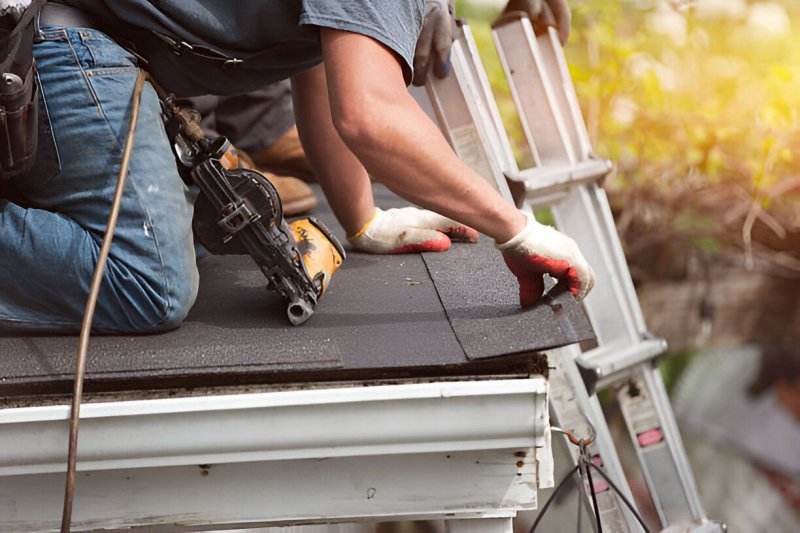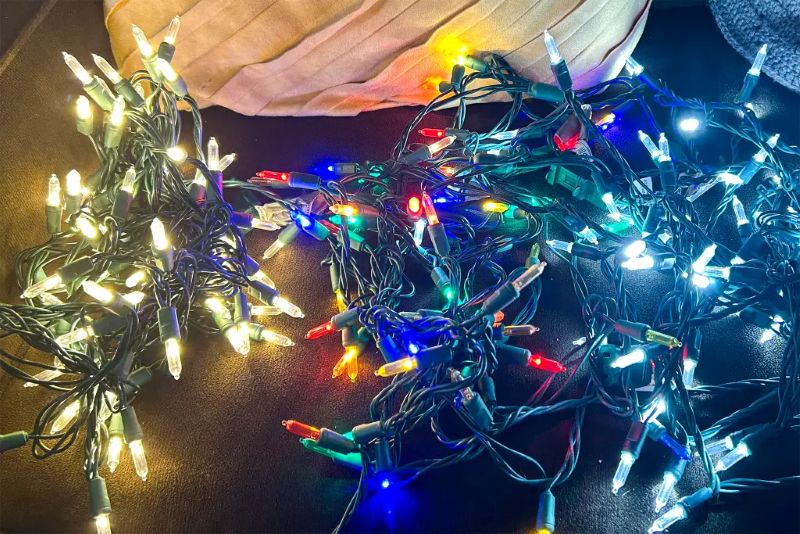
Your home's roof is more than just an aesthetic crowning glory; it’s the primary shield against the relentless forces of nature. From torrential downpours and biting winds to scorching summer sun and heavy winter snow, your roof silently endures it all, protecting your most valuable assets and the comfort within. Yet, despite its critical role, the roof is often the most overlooked component of a home's exterior, frequently forgotten until a significant problem arises.
Ignoring the subtle (or sometimes obvious) cries for help from your roof can lead to escalating damage, costly repairs, and even structural compromise to your entire property. Being proactive about roof maintenance and understanding the warning signs that indicate a need for professional intervention can save you immense time, money, and stress in the long run. Don't wait for a drip in your living room to signal distress. Here are the definitive signs that you are in dire need of professional roofing services.
I. Exterior Warning Signs: What Your Roof is Telling You from Afar
The most immediate indicators of roofing distress are often visible from the ground or with a safe, elevated inspection. A routine walk around your property, especially after a storm, can reveal a great deal.
1. Missing, Cracked, or Damaged Shingles: This is perhaps the most glaring sign. Shingles are designed to interlock and create a watertight barrier. If you spot shingles that are curled, buckled, blistered, or cracked, their integrity is compromised. Missing shingles leave exposed areas vulnerable to direct water penetration. Even seemingly minor cracks can allow moisture to seep in, leading to rot in the underlying decking.
2. Granule Loss (Bald Spots): Asphalt shingles are coated with ceramic granules that protect the asphalt from UV rays and add fire resistance. If your shingles appear "bald" or you find an excessive amount of gritty particles in your gutters or downspouts, it's a clear sign that your shingles are deteriorating. Significant granule loss reduces the shingle's effectiveness and shortens its lifespan, making it more susceptible to weather damage.
3. Sagging or Uneven Roofline: A healthy roof should have a straight, uniform appearance. If you notice any dips, sags, or unevenness in the roofline, particularly along the ridges, it's a serious red flag. This often indicates structural damage to the roof deck or rafters, which could be caused by extensive water damage, rot, or even foundation issues. This is not a superficial problem; it requires immediate professional assessment to prevent potential collapse.
4. Moss, Algae, or Fungi Growth: While seemingly innocuous, green or black streaks (algae), or patches of moss, especially on shaded areas of your roof, indicate sustained moisture retention. Moss can lift shingles, allowing water to penetrate underneath. Algae, while less destructive, can trap moisture and accelerate shingle degradation. These growths often signal poor ventilation or a lack of sunlight, creating an environment ripe for more severe issues.
5. Damaged or Clogged Gutters and Downspouts: Though not directly part of the roof structure, gutters and downspouts are crucial for directing water away from your roof and foundation. If they are sagging, pulling away from the house, filled with debris (especially shingle granules), or overflowing during rain, they can cause water to back up onto the roof, leading to fascia damage, ice dams in winter, and accelerated shingle decay.
6. Deteriorated Flashing: Flashing is the metal material installed around roof penetrations like chimneys, skylights, vents, and valleys to prevent water intrusion. If the flashing is rusted, bent, cracked, or appears to be poorly sealed, it creates a direct pathway for water to enter your home. Flashing issues are one of the most common causes of interior leaks.
7. Damaged Fascia and Soffit: The fascia board runs along the edge of the roof, just behind the gutters. The soffit covers the underside of your roof's overhang. If these show signs of rot, water staining, peeling paint, or holes, it often points to inadequate roof drainage or leaks, allowing water to wick into these wooden components.
II. Interior Warning Signs: When the Roof's Problems Reach Inside
Sometimes, the first indications of roofing trouble appear not on the outside, but within the comfort of your home. These signs are often more alarming and demand immediate attention.
1. Water Stains on Ceilings or Walls: This is the quintessential sign of a roof leak. Yellow, brown, or dark rings on your ceilings, especially on the top floor, or streaks running down interior walls, indicate water penetration. Even small, seemingly insignificant stains can signal a larger, hidden problem in the attic or roof structure. The leak might be far from the stain's location, making professional leak detection essential.
2. Musty Odors or Mold Growth in the Attic or Upper Levels: A persistent musty smell, particularly in the attic, is a strong indicator of chronic moisture problems. This moisture can be from a roof leak, or it could be due to poor attic ventilation, which allows condensation to build up. Untreated moisture leads to mold and mildew growth, which can damage insulation, wood, and pose significant health risks to occupants.
3. Dripping Sounds During Rain: While often accompanied by water stains, hearing distinct dripping noises during a rainstorm is an unmistakable sign of an active roof leak. The sound might seem minor, but it indicates a direct breach in the roof's protective layers.
4. High Energy Bills: An inefficient roof system can significantly impact your home's energy consumption. If your heating or cooling bills are inexplicably high, it could be due to damaged insulation in the attic from leaks, or poor attic ventilation. A compromised roof allows heated or cooled air to escape, forcing your HVAC system to work harder.
5. Light Visible Through the Attic Roof: If you go into your attic during the daytime and can see shafts of light peeking through the roof decking, you have serious structural breaches. These gaps are literal holes in your roof's protection, allowing not only light but also water, pests, and air to enter freely. This demands immediate professional intervention.
III. Age and Storm-Related Factors: Proactive Awareness
Even without visible damage, certain factors necessitate a professional assessment to prevent future issues.
1. The Roof's Age: Most asphalt shingle roofs are designed to last between 20 to 30 years, depending on the quality of materials and installation. If your roof is approaching or has exceeded this age, even if it looks okay, its components are likely nearing the end of their functional lifespan. Proactive replacement can prevent unexpected failures. Other materials like metal, tile, or slate have much longer lifespans, but still require periodic inspection.
2. Recent Severe Weather: Hailstorms, high winds, heavy snow loads, or ice dams can inflict significant, often unseen, damage. Strong winds can lift and loosen shingles, even if they don't tear them off completely. Hail can bruise or crack shingles, accelerating granule loss. After any severe weather event, it's prudent to have a professional inspection, as insurance claims often have time limits.
3. Neighbors Getting New Roofs After a Storm: If multiple homes in your immediate vicinity are having their roofs replaced after a specific weather event, it's a strong indicator that your property was also affected. Even if your roof doesn't show obvious signs, it's highly probable that it sustained hail or wind damage that may not be apparent to an untrained eye.
IV. Why Professional Intervention is Crucial
Attempting DIY roof repairs can be incredibly dangerous and often leads to more extensive, costly damage down the line. Professional roofing services offer:
- Safety: Roofing is hazardous work, involving ladders, heights, and precarious footing. Professionals have the training, equipment, and safety protocols to operate safely.
- Expert Diagnosis: A trained roofer can identify subtle signs of damage, determine the root cause of issues, and assess the full extent of damage, including hidden problems like deck rot or compromised insulation.
- Quality Workmanship and Materials: Professionals use high-quality materials and adhere to industry best practices and local building codes, ensuring a durable and long-lasting repair or replacement.
- Warranties and Guarantees: Reputable roofing companies provide warranties on their workmanship and the materials they use, offering peace of mind.
- Insurance Claim Assistance: Many roofers have experience working with insurance companies and can help homeowners navigate the claims process, ensuring fair compensation for storm damage.
Conclusion
Your roof is the steadfast guardian of your home, and its health directly impacts the well-being of your entire property. By actively looking for the signs discussed above – from the visible wear and tear on shingles to subtle shifts in your energy bills or the tell-tale drip of a leak – you can identify problems early. Delaying action on these warning signs only guarantees that minor issues will evolve into major, budget-breaking catastrophes.
Don't wait for your roof to fail catastrophically. Be vigilant, inspect regularly, especially after severe weather, and when in doubt, always consult with a reputable, professional roofing service. Investing in timely professional intervention is not merely a repair; it's an investment in the long-term safety, comfort, and value of your home.







0 Comments
Post Comment
You will need to Login or Register to comment on this post!